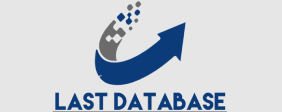Email marketing is not guesswork. It’s a field built on data. Every element can be optimized. The science of email marketing optimization uses evidence. It applies structured testing methods. It reveals what truly drives results. This moves beyond intuition alone. It ensures decisions are always informed. This maximizes campaign effectiveness. It leads to predictable, repeatable success.
Think of yourself as a scientist.You draw conclusions based on evidence. This scientific approach is powerful. It eliminates bias and assumptions.
Core Principles of Scientific Optimization
Scientific optimization has core rcs data principles. Firstly, Empirical Evidence. Base decisions on data, not guesses. What actually happened? Secondly, Testable Hypotheses. Formulate clear, measurable predictions. “If I change X, Y will happen.” Thirdly, Controlled Experiments. Isolate variables for testing. Change only one thing at a time. Fourthly, Statistical Significance. Ensure results are not due to chance. Use enough data points. Fifthly, Reproducibility. Winning changes should consistently perform. Verify results over time. Finally, Iteration. Optimization is a continuous cycle. Always test, learn, and improve.
Key Elements Under the Scientific Microscope
Every email element is a test how to use infographics for lead generation variable. Subject Lines are crucial. Test keywords, length, personalization. Preheader Text complements subject lines. Test its content and impact. Sender Name builds trust. Test different variations of sender. Call-to-Action (CTA) drives action. Test wording, color, size, placement. Email Body Copy engages readers. Test headlines, tone, storytelling. Images and Videos attract attention. Test their type, size, placement. Email Layout and Design affect readability. Test column structure, white space. Personalization Depth impacts relevance. Test how much personalization works. Send Time and Day influence opens. Test different delivery schedules. Offer/Incentive Structure drives conversions. Test different discount types or tiers.
Applying the Scientific Method for Better Results
Apply the scientific method rigorously. 1. Observe and Question: Notice usa lists trends, ask “why?” (e.g., “Why is our CTR low?”). 2. Formulate Hypothesis: “A clearer CTA will increase CTR.” 3. Design Experiment: Create two versions of email. One with current CTA, one with new. 4. Conduct Experiment: Split audience, send emails. Ensure sufficient sample size. 5. Analyze Data: Measure CTR for both versions. Determine statistical significance. 6. Draw Conclusions: If new CTA wins, implement it. If not, formulate new hypothesis. 7. Share Learnings: Document results for future reference. Build a knowledge base. This systematic approach is powerful. It ensures every change is data-backed. The science of email optimization leads. It leads to measurable, sustainable success.

